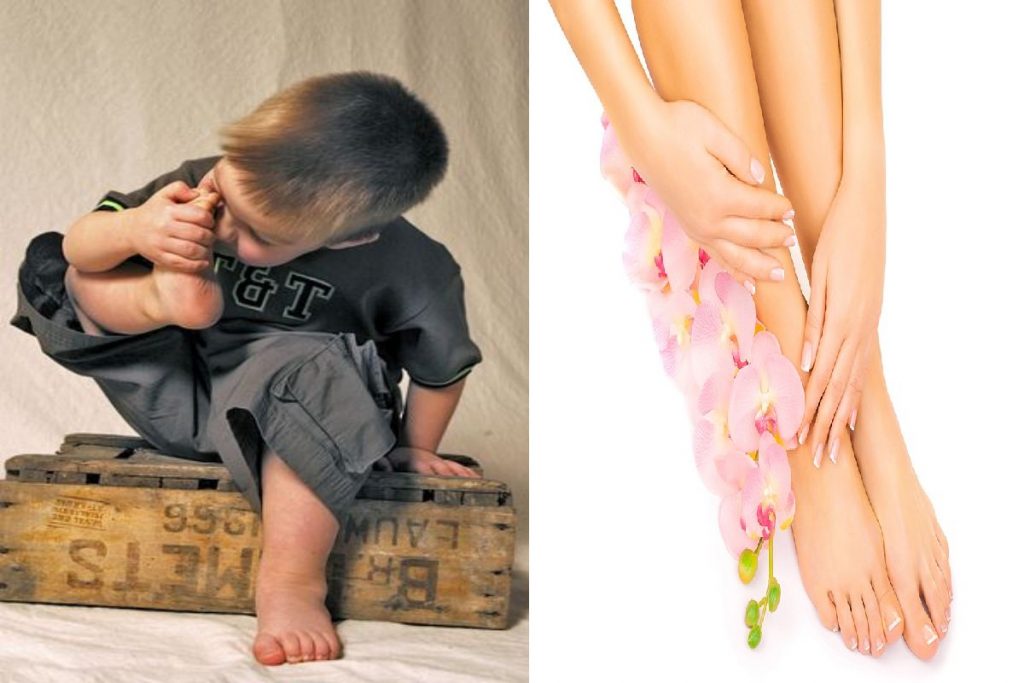Table of Contents
Foot Odor – Foot Care
Although the feet rarely smell roses, many people suffer from plantar bromidrosis, the learned name for the annoying phenomenon of foot odor. Good news: it is possible to stop them!
It happens that you try everything: menthol powder, deodorants, new socks, soles, shoes, and still nothing helps! As soon as you are barefoot, the air quickly stinks of old cheese! At the point where you are afraid to go anywhere, you have to take your shoes off.
That is to say (shoe stores), gyms, places of worship, or simply shoe lovers whose threshold cannot be cross with shod shoes. Before isolating yourself from any social life, be reassured: foot odor is not only (necessarily) due to poor hygiene, but it can defeat.
Bacteria and gases
We have billions of bacteria that live on the surface of our skin and participate in its good health. The problems start when these bacteria become too numerous. And this happens faster since the closed, hot, and humid environment is a refuge for the proliferation of bacteria! However, these bacteria reject sulfur compounds; It is this “flatulence” that smells bad!
Humidity is the number one opponent of your feet!
Bare feet of women among the flowers – Anti-odor operation!
- It is advisable to stop the evil at the root and fight against bacterial proliferation and the humidity that promotes it, translating into three gestures to eliminate foot odor.
- Wash your feet first, morning and night, with an antibacterial and antifungal soap. Dry them well, especially between your fingers.
- Then apply a specific deodorant or a 20% aluminum chloride cream to your feet, a substance that reduces sweating and has antibacterial properties.
- Finally, treat the shoes by adding powdered aluminum chloride to them.
Usually, bad smells should be gone within eight days. If the problem reappears, repeat the aluminum chloride treatment once or twice a week.
Also Read: Beauty Tips – Definition, 5 Tips, Easy Home Remedies, and More
And Yeast Infection
Candidiasis (athlete’s foot) does not cause odors, but it can be concurrent with smelly feet since they also develop through sweating. A yeast infection of the feet begins with a crack between the fourth and fifth toe, with itching.
Left untreated, the skin flakes, the fungus spreads and can reach the big toe, even attacking the fingernails, which become white and crumbling. The treatment for yeast infections is almost the same as for foot odor, except instead of an aluminum chloride product, apply an antifungal cream, gel, or lotion for 15 days. For fitting and prevention, do not hesitate to use a spray against fungal infections. If they persist, see a dermatologist – you may need to take oral therapy.
Prevention of Foot odor
- Humidity is the number one opponent of your feet! It is what promotes bacterial and fungal infections. In addition to the treatments, be sure to keep your feet as dry as possible.
- Always make sure to dry your feet thoroughly after bathing, swimming, or showering. Remember to clean the spaces between the toes well.
- When it comes to socks, avoid synthetic materials (acrylic, polyester, etc.) and favor natural fibers (cotton, wool, etc.), which allow the skin to breathe better. Don’t hesitate to change it during the day if your feet are sweating too much.
- In terms of shoes, leather is by far the material that best adapts to your feet! Dry your boots every night, placing them near a heater, for example, to let the moisture evaporate overnight. Delete the models if there are any.
Bulb heels
Usually not, but if the fluid inside presses painfully against the dermis (the susceptible layer of skin under the epidermis), you can relieve the pressure by piercing the blister with it. A needle previously disinfected with alcohol.
Be careful not to pierce the dermis and especially not to tear the skin! Once the excess fluid has drained, apply a special thermoformed bandage and do not touch it again until it is dry or absorbed.
One bullet in the foot is not the other!
Corns are localized thickenings of the skin. They are usually painless and usually form on the heels or the sole. To get rid of it, apply a moisturizer to soften the skin and regularly sand your calluses with a grater.
